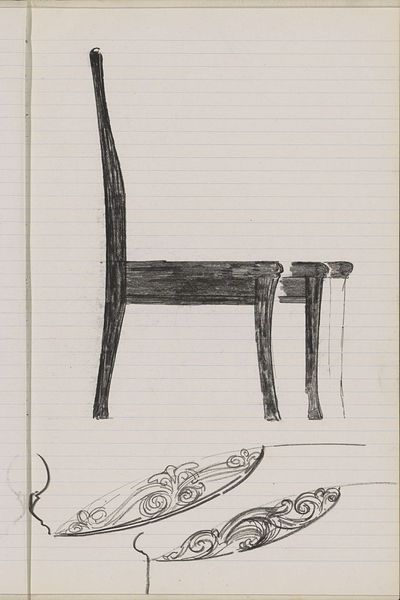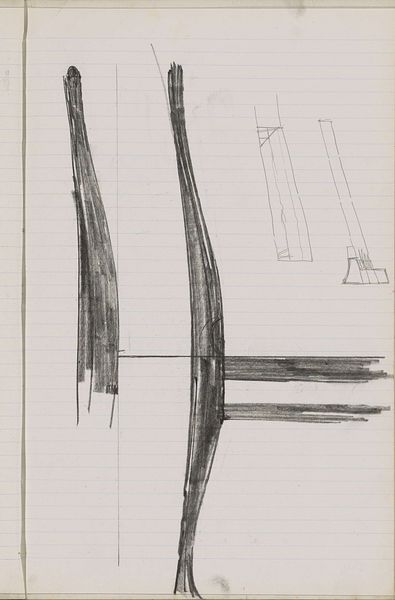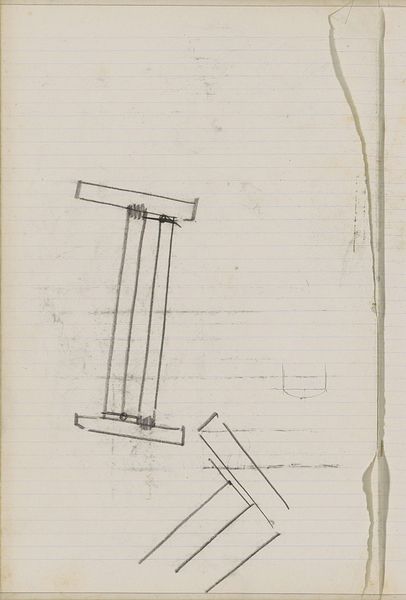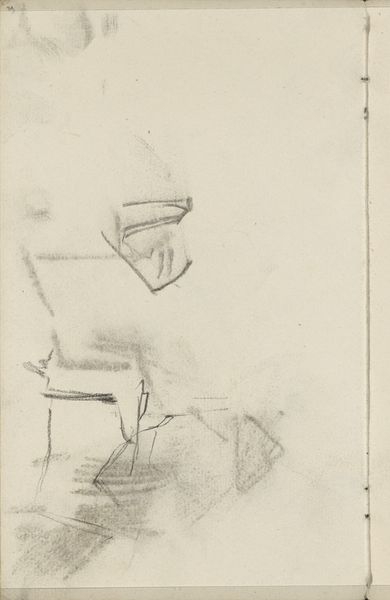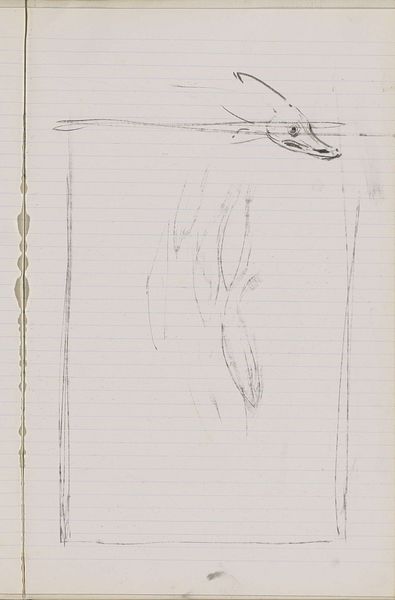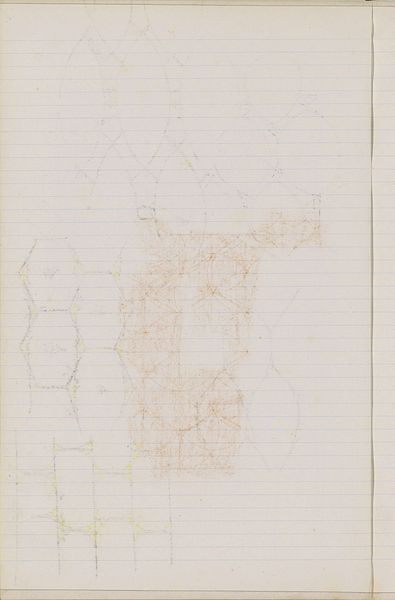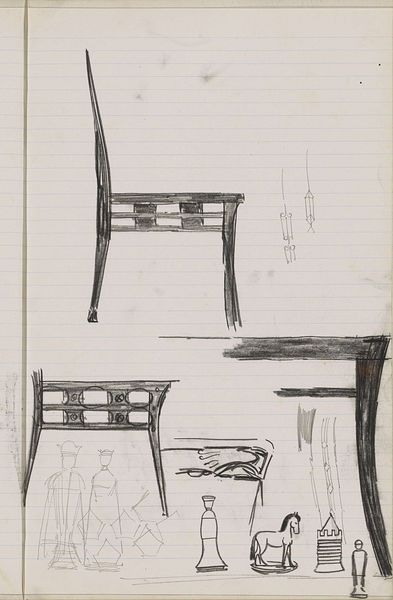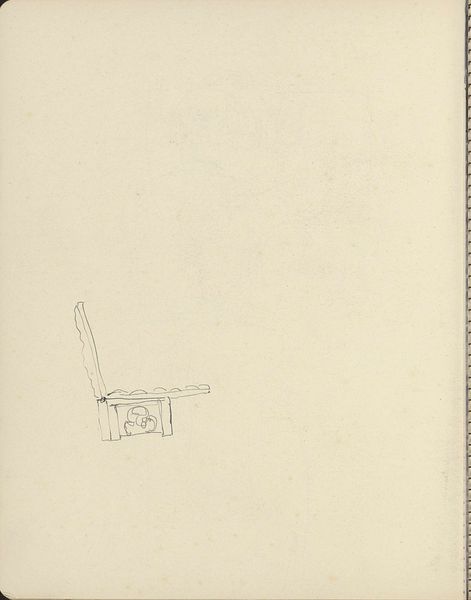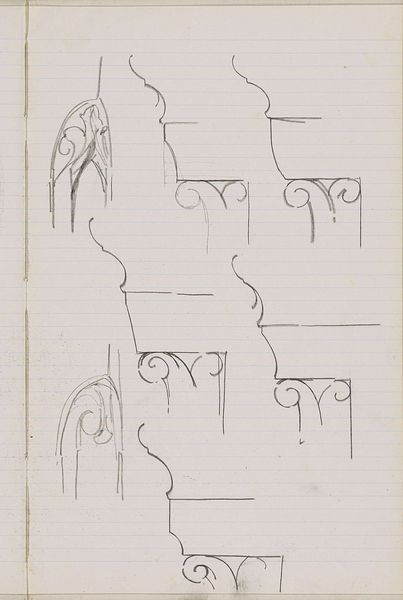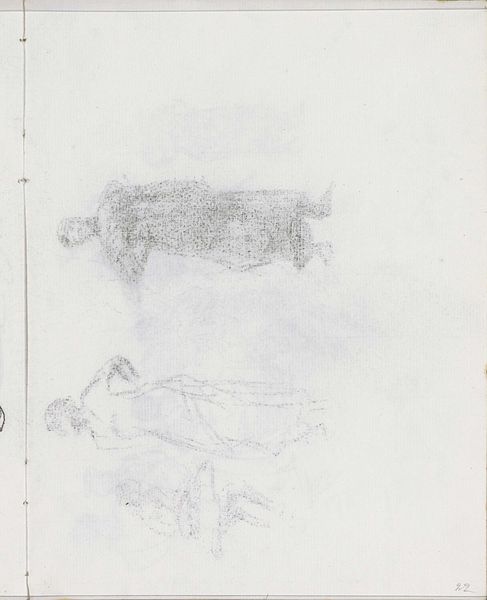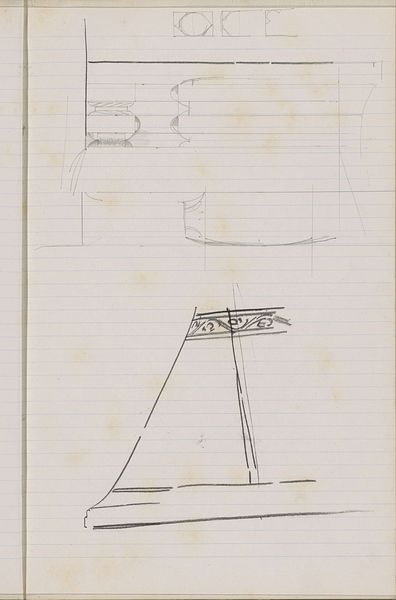
drawing, paper, pencil
#
drawing
#
amateur sketch
#
light pencil work
#
thin stroke sketch
#
pencil sketch
#
incomplete sketchy
#
hand drawn type
#
paper
#
form
#
personal sketchbook
#
geometric
#
pencil
#
line
#
sketchbook drawing
#
sketchbook art
#
initial sketch
Copyright: Rijks Museum: Open Domain
Curator: This is Gerrit Willem Dijsselhof’s pencil drawing, “Abklatsch van de krijttekening op blad 58,” from around 1901. It resides here at the Rijksmuseum. Editor: There’s a quiet loneliness about this sketch; it’s like catching a glimpse of something discarded, rendered in soft, uncertain strokes. Curator: Exactly! Dijsselhof’s strength here lies not in finished precision, but in capturing the essence of form and shadow with minimal means. Editor: There’s that underlying tension of art nouveau as a structure and system. It gives a sense of almost scientific examination; observe the lines of the paper aligning, creating the shape in negative space. The subject matter of the piece has that function versus decorative tension within the shapes themselves. The organic-ness fights against the functional. Curator: You know, thinking of it as a sort of proto-industrial study is so fascinating! I had imagined Dijsselhof perhaps quickly documenting pieces in a domestic scene, the design of which resonated with his wider artistic thinking. Look at how even within this preliminary sketch the underlying paper lines seem to add order and grounding to it, creating structure even at this very loose stage! It is still the artist as observer but not so much as inventor! Editor: Do you feel those ornamental shapes at the bottom of the sketch support that domestic argument? Are they a possible origin point, or further observation of something that could function or merely has that art nouveau decorative tension within its curves and turns? Curator: Hmmm, that decorative grounding makes me wonder what followed in Dijsselhof's art following these moments. Was this really the kernel for other possibilities? A study in shapes or perhaps a larger piece we haven’t found yet, so many paths it makes me wonder what was intended next in his trajectory. Editor: I find I walk away looking back at the sketch almost seeing it again for the first time each time, never really resolving anything, instead left only with the observation and its place alone on the page.
Comments
No comments
Be the first to comment and join the conversation on the ultimate creative platform.
